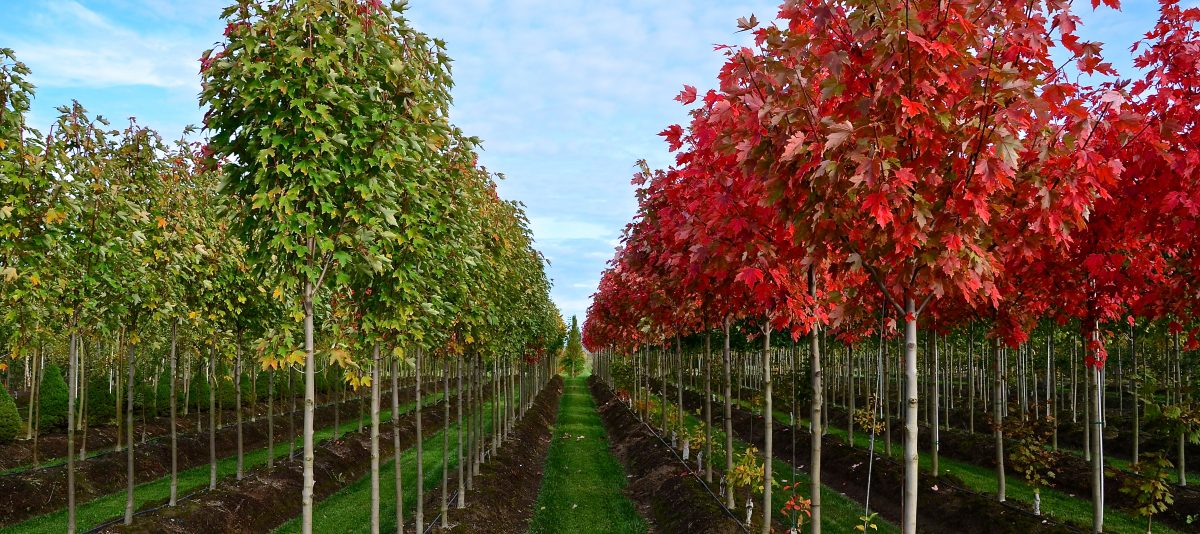Sugar Cone and Apollo®
Acer saccharum ‘Sugar Cone’ and ‘Barrett Cole’
Growing up in the Midwest, I found the sugar maple, Acer saccharum, to be one of my favorite native trees. I recall them being tolerant of the understory shade but eventually becoming the dominant tree with huge massive limbs. Given their size, they are well suited for native forests as well as parks and boulevards. But as a street tree, they are generally too large. However, two sugar maple selections that are now available to the landscape industry, are a better fit in our more confined urban spaces; Acer saccharum ‘Sugar Cone’ and Apollo® sugar maple, Acer saccharum ‘Barrett Cole’. They are both narrow, miniature versions of the species. Sugar Cone maple is said to have a mature height of 25 feet and spread of about 13 feet. Apollo® will be a little taller at 30 feet tall and maybe narrower at about 10 feet wide. Both trees are perfect sizes for most street tree locations.
Typical of the sugar maple species, their bark is light brown and slightly rough in youth. The leaves on both of the cultivars are the well-known and generally recognized maple leaf shape (as seen on the Canadian flag). They appear to be a little darker green in the summer than the species, finishing the season with the typical outstanding red tipped lobes on golden yellow leaves in the fall. Their leaves drop relatively early, which some people like. It appears they have shallow wide spreading roots in wet or limited depth soils, but develop much deeper and broader spreading roots in well drained soils. Information indicates they like to be in moist soils but my own experience with sugar maples is they are not overly tolerant of wet soils. I cannot say they are drought tolerant but I suspect this has to do more with the soils they are growing in, the competition around them and according to literature, the progeny of the parent tree.
From our experience, they are relatively tolerant of transplanting but rooting does not appear to be quite as prolific at the red maple family. Maintaining a central leader is a challenge with these cultivars and their branch structure does not appear to be as predictable or agreeable as the general species. So be wary of that challenge during selection, acceptance and maintenance. They can look a bit sparsely branched in their winter form, but fill out very nicely in full leaf, in the summer.
Although I am recognizing these two cultivars for their limited width and height, there are other larger full crowned sugar maple cultivars that may be acceptable for larger urban planting strips, so do not limit your consideration to these narrow forms of sugar maples for urban trees if you have the room.
As always, I would appreciate hearing your experiences with these and other trees.
CLICK HERE FOR MORE TREE PROFILES
Jim Barborinas
ISA Certified Arborist #0135
ASCA Registered Consulting Arborist #356
Certified Tree Risk Assessor #PNW-0327
Thanks to Christina Pfeiffer for editing
J.A. Schmidt & Son Co for Photos

